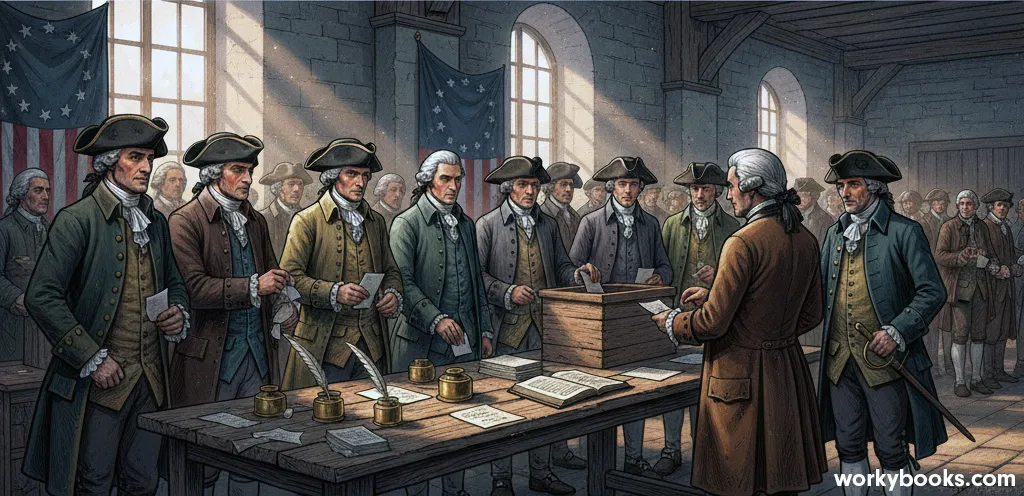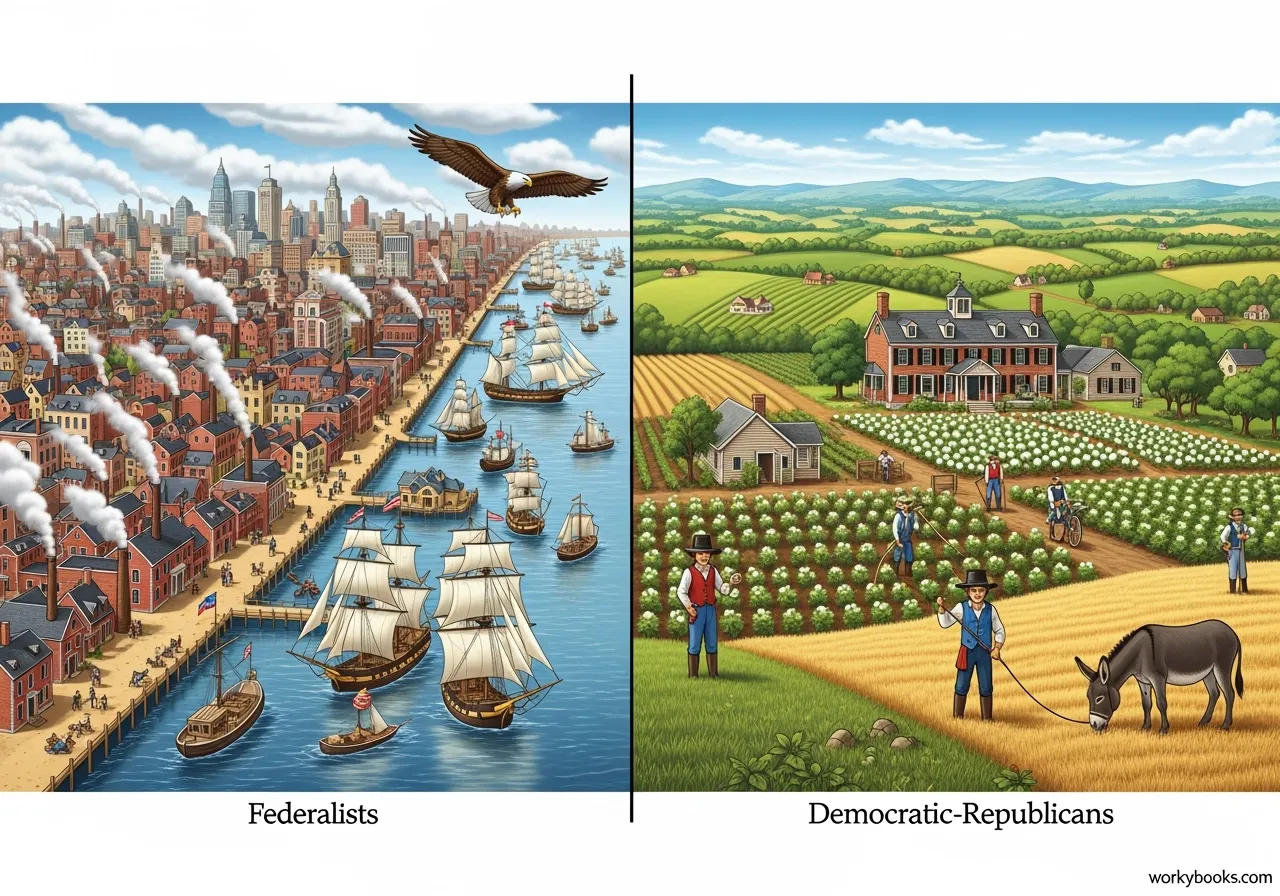Election of 1800
Discover how this historic election changed American politics forever!
What Was the Election of 1800?

The Election of 1800 was one of the most important presidential elections in American history. It was the fourth presidential election and marked the first time that power transferred peacefully from one political party to another. This election is sometimes called the "Revolution of 1800" because it showed that the young American democracy could change leaders without violence or revolution.
Before this election, the Federalist Party, led by John Adams, was in power. The Democratic-Republican Party, led by Thomas Jefferson, wanted to take the presidency. The election was fiercely contested and ended in a tie between Thomas Jefferson and Aaron Burr, both from the same party!
Did You Know?
The Election of 1800 was the first time that two organized political parties competed against each other for the presidency!
The Candidates
Thomas Jefferson
Democratic-Republican candidate from Virginia, author of the Declaration of Independence
Aaron Burr
Democratic-Republican candidate from New York, Jefferson's running mate
John Adams
Federalist candidate from Massachusetts, the current President running for re-election
Charles Pinckney
Federalist candidate from South Carolina, Adams' running mate

Thomas Jefferson was the main Democratic-Republican candidate. He believed in limited federal government and more power for state governments. Jefferson was a skilled writer and thinker who had served as Secretary of State under George Washington.
Aaron Burr was Jefferson's running mate from New York. At the time, the Constitution didn't have separate ballots for President and Vice President - the candidate with the most votes became President, and the runner-up became Vice President.
John Adams was the current President and the Federalist candidate. He believed in a strong federal government and had served as the first Vice President under George Washington.
Political Parties

The Election of 1800 featured the first two-party system in American history:
Federalist Party
- Led by John Adams and Alexander Hamilton
- Believed in strong federal government
- Supported business, manufacturing, and trade
- Favored Great Britain in foreign policy
Democratic-Republican Party
- Led by Thomas Jefferson and James Madison
- Believed in limited federal government with power to states
- Supported farmers and agriculture
- Favored France in foreign policy
The two parties had very different ideas about how the country should be governed. The Federalists wanted a strong central government that could build roads, support businesses, and create a national bank. The Democratic-Republicans believed that states should have more power and that ordinary farmers were the backbone of America.
The Tie and 12th Amendment

The Election of 1800 had a surprising result: Thomas Jefferson and Aaron Burr tied with 73 electoral votes each! John Adams received 65 votes. According to the original Constitution, each elector cast two votes for President, and the candidate with the most votes became President while the runner-up became Vice President.
Since Jefferson and Burr tied, the election went to the House of Representatives to decide. The House voted 35 times without a winner! Finally, on the 36th ballot, Thomas Jefferson was elected President, and Aaron Burr became Vice President.
Election Held
Presidential election results in a tie between Jefferson and Burr
House Vote
House of Representatives votes 36 times before electing Jefferson
12th Amendment
Amendment ratified to prevent future ties between President and VP candidates
To prevent this problem from happening again, Congress passed the 12th Amendment in 1803, which was ratified in 1804. This amendment created separate ballots for President and Vice President, so electors would clearly vote for each position separately.
Impact and Legacy

The Election of 1800 had several important impacts on American history:
Peaceful Transfer
First peaceful transfer of power between political parties in modern history
12th Amendment
Led to constitutional change separating votes for President and Vice President
Two-Party System
Established the two-party system as a permanent feature of American politics
Thomas Jefferson called his election the "Revolution of 1800" because it represented a major change in the direction of the country without bloodshed. His presidency reduced the power of the federal government, cut taxes, and made the Louisiana Purchase, which doubled the size of the United States.
The Election of 1800 proved that the American system of government could survive changes in leadership and different political ideas. This peaceful transfer of power became a model for democracies around the world.
Election of 1800 Quiz
Test your knowledge about the Election of 1800! Answer all 5 questions to see how much you've learned.
Frequently Asked Questions
Here are answers to common questions about the Election of 1800:
Election of 1800 Trivia
Discover interesting facts about the Election of 1800!
Last Minute Change
One elector from Rhode Island was planning to vote for Burr but changed his vote to Jefferson at the last minute, almost preventing the tie!
Mudslinging Campaign
The campaign was very negative. Federalists called Jefferson a "dangerous radical" and atheist, while Democratic-Republicans called Adams a "monarchist."
Constitutional Flaw
The tie revealed a major flaw in the original Constitution's election process. The 12th Amendment fixed this problem just four years later.
Peaceful Transition Legacy
The peaceful transfer of power in 1800 set an important precedent that has continued in American politics for over 200 years.


